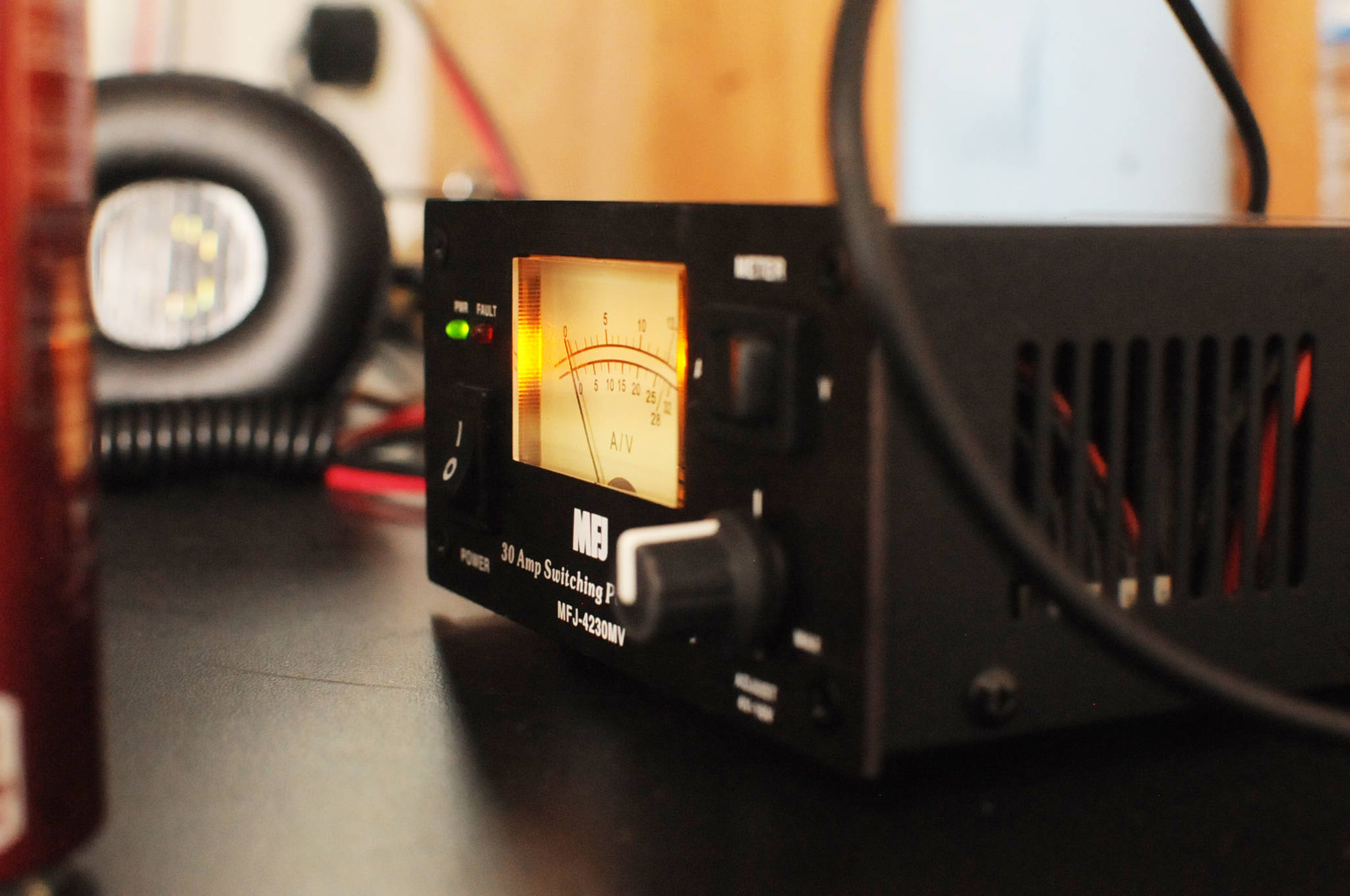The Skyview Middle School parking lot became a window to all of North America for the day Saturday.
A towering radio antenna linked the Moosehorn Amateur Radio club’s mobile communications trailer to other operators all over the continent for the annual Field Day. The event, coordinated by the American Relay Radio League, invites ham radio operators onto the airwaves to make as many contacts as they can using a generator for electricity rather than operating on the grid.
Inside the trailer, the operators called out the Kenai area’s sign onto the air in a rhythmic repetition. Bubbling and buzzing voices called back, leading with letters identifying their locations: Wisconsin, the Central Valley of California, Canada.
Some of the club members have been operating ham radios for decades. Don Wilson, who operated one of the stations Saturday afternoon, said he started operating them when he was 18 and drafted into the U.S. Army’s Signal Corps.
Wilson said when he operates the radios in the Lower 48, he’s talked with operators as far away as Africa. Alaska provides something of a challenge to make contacts, with its mountains and different types of terrain, he said.
“We’re bouncing the signals off the ground,” he said.
Ham radio is not just an old-fashioned thing — it’s a fallback for when other communication means fail, such as during disasters or outages. One of the points to Saturday’s event was to have ham radio clubs operate using only a generator or battery, the way they would if electrical grids failed. Wilson said aid organizations like the Red Cross have their own training for amateur radio operators.
Ham radio operators in the U.S. have to be licensed before jumping on the air, as the frequencies are monitored and regulated by the Federal Communications Commission. He holds an Amateur Extra License from the American Relay Radio League, the national association of amateur ham radio operators. Saturday was also a day to take the licensing test in a variety of levels — technician, general and amateur extra.
The Kenai Peninsula Borough’s Citizen Emergency Response Team may use ham radio. Several of the people taking tests Saturday work or volunteer with emergency response.

